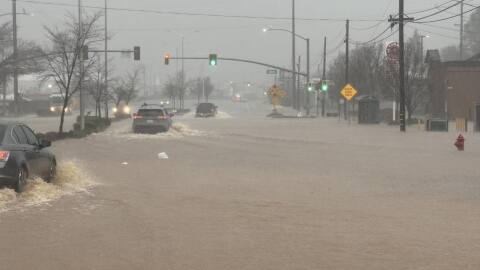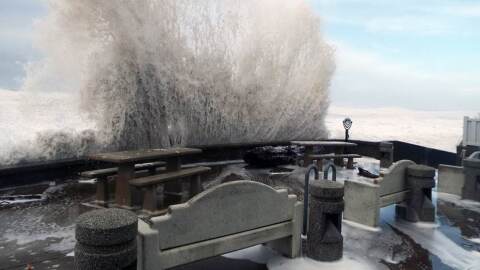-
Northern California can expect a stormy Christmas as an atmospheric river moves through the region.
-
JPR meteorologist Milt Radford offers insight into the holiday travel weather and a warning about King tides.
-
The region is experiencing unusually warm and dry conditions, scientists find, and snowpack is at record lows for this time of year
-
Days of torrential rain in Washington state caused historic floods that stranded families on rooftops, washed over bridges and ripped at least two homes from their foundations, and experts warned that that flooding to come could be catastrophic
-
It’s almost mid-December and Oregon’s Timberline, Mt. Bachelor and Mt. Ashland ski areas still don’t have enough snow to open up their lifts.
-
Another heat wave is forecast to hit the region Friday afternoon and could last through Monday evening.
-
With temperatures over 100 degrees, local organizations are opening air-conditioned spaces to the public.
-
Union County has experienced a severe drought since June 24, while Morrow and Douglas counties have been under severe drought conditions since July 15.
-
The entire U.S. West Coast is under a tsunami advisory Tuesday evening, after a massive 8.8 magnitude earthquake sent shockwaves across the land and sea several hours earlier.
-
The National Weather Service office in Medford says it’s well-staffed for the wildfire season, including the 70-plus lightning-caused fires this week.
-
In March and April, parts of southern Oregon experienced flooding from rapid snowmelt, record-level rainfall and overflowing rivers.
-
The National Weather Service is suspending some weather balloon launches because of staffing shortages.
-
Flooding and landslides from swollen rivers and record-setting rain in southern Oregon and parts of the Willamette Valley have caused millions of dollars in damages and cost one woman her life.
-
Heavy rains battered areas of Southern Oregon this weekend, resulting in widespread flooding and damage.















